Featured Articles
Solving “The Problem”
 This Saturday, one of boxing’s most prodigious talents, Adrien Broner {24-0 with 20 Kos} will be stepping u to 135 pounds for the very first time {at least officially} when he meets tough Mexican Antonio DeMarco {28-1-2 with 21 KOS} at the Boardwalk Hall in Atlantic City, New Jersey.
This Saturday, one of boxing’s most prodigious talents, Adrien Broner {24-0 with 20 Kos} will be stepping u to 135 pounds for the very first time {at least officially} when he meets tough Mexican Antonio DeMarco {28-1-2 with 21 KOS} at the Boardwalk Hall in Atlantic City, New Jersey.
While the bout is no forgone conclusion -DeMarco is certainly no walk in the park- the general feeling among most boxing people is that Adrien Broner will have too much speed and skill for the tough but limited Tony DeMarco to handle.
With this in mind then, I thought I’d take this time to dissect Adrien Broner’s signature technique, the shoulder roll, and highlight how Tony DeMarco could possibly take advantage of it in any way.
Getting beyond the shoulder
Even at this early stage in his career, Adrien Broner is already one of the best defensive fighters in professional boxing. One of the ways he remains so elusive during a fight is because of the way he uses his shoulder to defend himself. The shoulder roll is the foundation of Broner’s game.
Here’s a quick look at the type of defense we’re going to be looking at.
Broner defends using the same shoulder roll defense as the likes of James Toney and Floyd Mayweather Jr. Standing side on to his opponent, Broner’s left shoulder is raised and slightly turned in so that it’s guarding his chin. His left elbow is pushed out slightly so that his forearms are protecting his lower left side, and his right glove is positioned by his chin so that his right elbow is covering his lower right side. This defense is excellent for deflecting punches using the shoulders, arms and elbows by rolling in the same direction with the punch. It’s also useful for creating angles to counter back from.
One of the best examples of Adrien Broner effectively using his shoulder roll defense came against Vicente Escobedo during his last fight.

Vicente Escobedo’s applying pressure in close. Notice as he’s trying to land a left hook to the body followed by a right hook up stairs, how Broner rolls and avoids the attack -blocking Escobedo’s left hook by jamming his right arm into the shot, and Escobedo’s right hook by using his left elbow to intercept the shot as it’s coming over the top. This defense blunts wide punches in close easily.

Escobedo is standing right in front of Broner. As he tries to land a left/right combination, Broner picks both shots off effortlessly using his elbows. Again, Escobedo’s shots are coming in wide and are easy to track.

Once more, Escobedo tries to land a left/right, and once more, Broner evades both shots by using his right elbow and lead shoulder to block and roll with the punches.
Here’s Vicente Escobedo trying to mount some offense without success and this time, being countered for his troubles.

Escobedo finds himself standing right in front of Broner with his back up against the ropes. As Escobedo pushes forward in an attempt to land a left hook to the body, Broner places his right glove on the back of Escobedo’s neck and pushes down. Using Escobedo’s neck for leverage, Broner comes back with a short left cross in close, before blocking a right hook to the body by jamming his left shoulder and elbow into the shot. In this position, Broner uses his left elbow to push Escobedo off and create room for a counter right uppercut through the center.
This sequence shows how comfortable Broner is defending inside the pocket.

Notice as Escobedo throws a jab, Broner sees it coming and performs an inside parry, knocking Escobedo’s lead hand down. Escobedo then follows up with a right and left hook towards the body, but Broner, always relaxed on the inside, intercepts both shots easily using his left elbow to block the right, and right elbow to block the left.

Look how Escobedo is attacking Broner the same way over and over. As Escobedo comes in with another left hook/right hook combination, Broner doesn’t even have to adjust his guard. Because Escobedo’s shots are coming in wide, Broner knows he can catch them on his gloves and shoulders by simply rotating his hips. Notice how Broner’s chin is hidden behind his lead shoulder and right glove at all times.

Here’s Broner hiding behind his shoulder, this time, disguising his offense. As he pushes Escobedo towards the ropes, notice how Broner is still in a defensive position {chin protected by his lead shoulder and right glove} but he’s also in position to land a right uppercut, or, as he does in this scenario, use his left arm to separate himself from Escobedo in order to land a right hook to the side of Escobedo’s body, underneath Escobedo’s high guard.
By looking at the sequences above, it’s doesn’t take long to realize that Adrien Broner is a very skilled individual. It doesn’t take long to come away with the conclusion that all of Vicente Escobedo’s attacks were too predictable either. Escobedo was never going to take Broner by surprise by standing right in front of him without the using any feints, a change of angle or any creativity prior to launching an attack. Every single Escobedo assault consisted of him attacking in a straight line, throwing nothing but wide left/right combinations. No fighter is going to get beyond Broner by simply pushing forward, hoping to get inside and rough him up. As I’ve already mentioned, I believe Broner’s shoulder roll defense is the perfect foil for neutralizing wide shots on the inside. Once a fighter gets too close to Broner, it’s nigh on impossible for them to throw anything other than wide punches. Broner is very good at eliminating his opponent’s attacking options. By covering up and looking vulnerable, he manipulates his opponents into thinking they will have more success by jumping in and swarming all over him, as opposed to standing off and boxing him.
In March of 2011, Adrien Broner won a hotly disputed decision over rugged veteran, Daniel Ponce De Leon. As I’m sure you’re all aware, De Leon is far from an elite level fighter. He’s not the fastest, not the most athletic nor is he the most technically gifted, and yet he was able to fight on even terms with Adrien Broner for 12 rounds because of a well laid out game plan.
So what was Daniel Ponce De Leon able to do against Adrien Broner that Vicente Escobedo could not?
Movement

It’s immediately apparent here, that Ponce De Leon is using more of the ring than what Vicente Escobedo did during his fight with Broner. Whereas Escobedo was always right in front of Broner, peeking out beyond his earmuff guard and his feet in line with his shoulders, De Leon is moving laterally, side to side and giving Broner lots of different looks. Moving in this way doesn’t allow Broner to plant his feet and set himself –crucial elements that are required in order for the shoulder defense to be effective.
Feinting

Notice how De Leon comes in with a foot feint and instantly causes Broner to react. De Leon hasn’t even thrown a punch yet, but he’s managed to do something to Broner that Escobedo couldn’t, and that’s put Broner on to his back foot.

Notice how Ponce De Leon makes Broner reluctant to throw by feinting him. As De Leon takes a step forward, Broner reacts and leans away. As Broner resets, De Leon steps in again and causes Broner to react again. Feinting in this way disrupts an opponent’s rhythm. Broner is at his best when he’s dictating things -using his slick skills to control the inside action or keeping his opponent occupied with the jab. Broner is too busy thinking about De Leon’s sudden sporadic bursts to do either in this instance. I also want you take another look at Broner’s feet as Ponce De Leon is stepping in. Notice how Broner never really takes a step back. Instead, he relies on nothing but upper body movement to avoid an attack.
Using southpaw angles effectively

De Leon is not the quickest of fighters by any stretch of the imagination, but because he has a clear understanding of angles, he’s able to attack where Broner’s at his most vulnerable –in a position where he’s unable to defend and counter with maximum effect. See how De Leon has stepped inside of Broner’s lead shoulder in order to land his lead hand, as opposed to attacking from outside of it as Escobedo did. Broner’s defense is ineffective if the attack is travelling inside of his lead shoulder.

Once again, De Leon has managed to get a dominant angle on Broner. As Broner jabs, De Leon ducks under it before landing his trailing to the body. Notice how as De Leon steps in, he’s successful in getting his lead foot outside of Broner’s.

It’s the same story again in this sequence. As Ponce De Leon steps forward, Broner is rooted to the spot. Because Broner defends primarily by planting his feet and using upper body movement, as opposed to moving away to avoid an attack, De Leon can gain the outside position and land his trailing hands to Broner’s body by stepping outside of him. A simple step back may have shut down Ponce De Leon’s charge.
Mixing up the target with the one-two

Here, Ponce De Leon is drifting left before falling in with an overhand left. Notice how De Leon throws a range finding right before throwing the left. Doing this forces Broner into opening up with a right hand. Believing this was De Leon’s primary attack, Broner left himself available for the left hand over the top. It’s yet another unpredictable, but brilliant strategical attack from Ponce De Leon –drifting left, inside of Broner’s lead shoulder, before attacking in an unpredictable manner, using relatively straight shots as opposed to the wider, easier to read shots of Escobedo.
And another…

De Leon is successful using the same strategy here as well. Only this time, he alternates the target by going to the body instead. Again, Ponce De Leon comes in from the outside and throws a range finding lead right hand before dropping a left hook into Broner’s stomach.
As you can see, there were vast differences between the ways in which Vicente Escobedo and Daniel Ponce De Leon went about their business with Adrien Broner.
Although there was an obvious weight issue when they fought, Vicente Escobedo would have had very little success against Adrien Broner, regardless of weight because;
-
He lacked creativity on offense
-
Showed little to no lateral movement
-
Attacked and backed up in straight lines
-
Remained stationary and in front of Broner for the duration of the fight
-
Continued to throw punches outside of Broner’s lead shoulder.
-
Couldn’t avoid the pocket
-
Threw wide, telegraphed, looping punches
On the other hand, Daniel Ponce De Leon had a lot of success against Adrien Broner because;
-
He used plenty of lateral movement
-
Used his southpaw stance to its full affect {angles}
-
Mixed up his punches, high and low
-
Used feints
-
Avoided the inside for long periods of the fight
-
Used an unpredictable” in and out” strategy
-
Threw straight punches
So what can Tony DeMarco take from both of these fights?
Although common perception says that a defensive counter puncher is susceptible to volume and pressure, I believe that an inside fight here would favor Adrien Broner. Besides, not everyone is able to maintain the same kind of frenetic pace that Abner Mares produced against Anselmo Moreno last weekend.
No, in my view, Tony DeMarco should avoid getting too close to Broner. From mid to long range, there are multiple offensive weapons and angles to choose from. Once inside, however, such is the way that Broner positions himself in relation to his opponent, there are only a few attacking options available, primarily a right or a left hook. When most people look at a fighter like Broner, they assume his defensive skills are a result of God-given perception, when really, it’s down to visual clarity amid heavy fire and the probability of an opponent’s attack. When Broner is defending, his eyes are wide open and he sees everything that’s going on. If an opponent is right up on top of him, then rest assured, he knows that all he needs to look out for are the shots that he’s given his opponent permission to throw, so to speak. It’s all about anticipation. Vicente Escobedo continued to put himself in a position where he could throw nothing but wide hooks around the sides of Broner’s guard. Broner knew this and allowed Escobedo to throw wide shots at his arms, shoulders and elbows, before systematically breaking him down.
I believe DeMarco would be well advised to take a leaf out of Ponce De Leon’s book by using plenty of movement combined with feints, sporadic attacks and straight punching, and also by moving to Broner’s right, and attacking inside of his lead shoulder.
Even though Broner eventually went on to win the fight, he never quite came to terms with what Ponce De Leon was doing to him. DeMarco is an intelligent, gutsy, bigger and probably a quicker fighter than Ponce De Leon. Oh, and he’s got those southpaw angles on his side too.
However, saying what someone could or should do and what someone can do are two very different things entirely. Things look a lot differently in the heat of the battle and I have a funny feeling that Adrien Broner has improved a lot since his struggle with Daniel Ponce De Leon.
If I was a gambling man, I’d say Broner will be too fast and too skilled for DeMarco . I can’t get the vision of Jorge Linares boxing circles round DeMarco before he was eventually cut up and stopped. Simply put, Adrien Broner is bigger, faster and stronger than Linares. He’s also much better defensively and has way more punching power than Jorge Linares too. The more I think about it, the more I can envision Broner taking DeMarco out before the final bell. I sense we haven’t seen the best of Adrien Broner just yet. Maybe this Saturday we get to see something special from a potentially very special fighter.
-
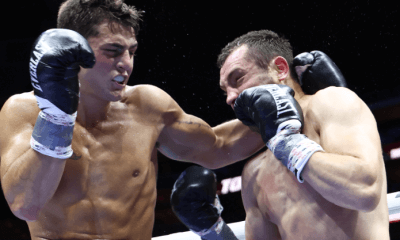
 Featured Articles3 weeks ago
Featured Articles3 weeks agoVito Mielnicki Jr Whitewashes Kamil Gardzielik Before the Home Folks in Newark
-
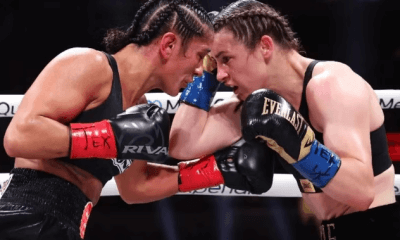
 Featured Articles4 days ago
Featured Articles4 days agoResults and Recaps from New York Where Taylor Edged Serrano Once Again
-
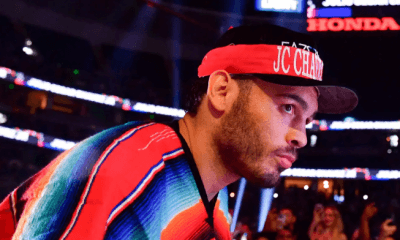
 Featured Articles1 week ago
Featured Articles1 week agoFrom a Sympathetic Figure to a Pariah: The Travails of Julio Cesar Chavez Jr
-
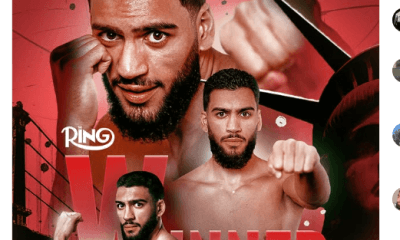
 Featured Articles3 days ago
Featured Articles3 days agoResults and Recaps from NYC where Hamzah Sheeraz was Spectacular
-
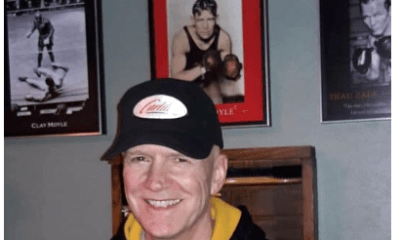
 Featured Articles4 weeks ago
Featured Articles4 weeks agoCatching Up with Clay Moyle Who Talks About His Massive Collection of Boxing Books
-
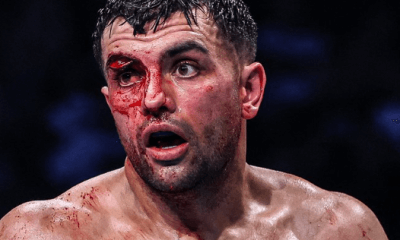
 Featured Articles1 week ago
Featured Articles1 week agoCatterall vs Eubank Ends Prematurely; Catterall Wins a Technical Decision
-
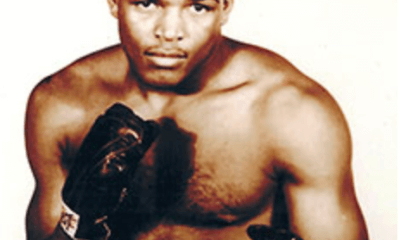
 Featured Articles4 days ago
Featured Articles4 days agoPhiladelphia Welterweight Gil Turner, a Phenom, Now Rests in an Unmarked Grave
-
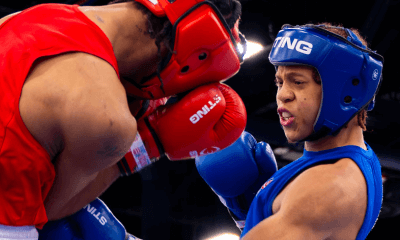
 Featured Articles3 weeks ago
Featured Articles3 weeks agoMore Medals for Hawaii’s Patricio Family at the USA Boxing Summer Festival


















